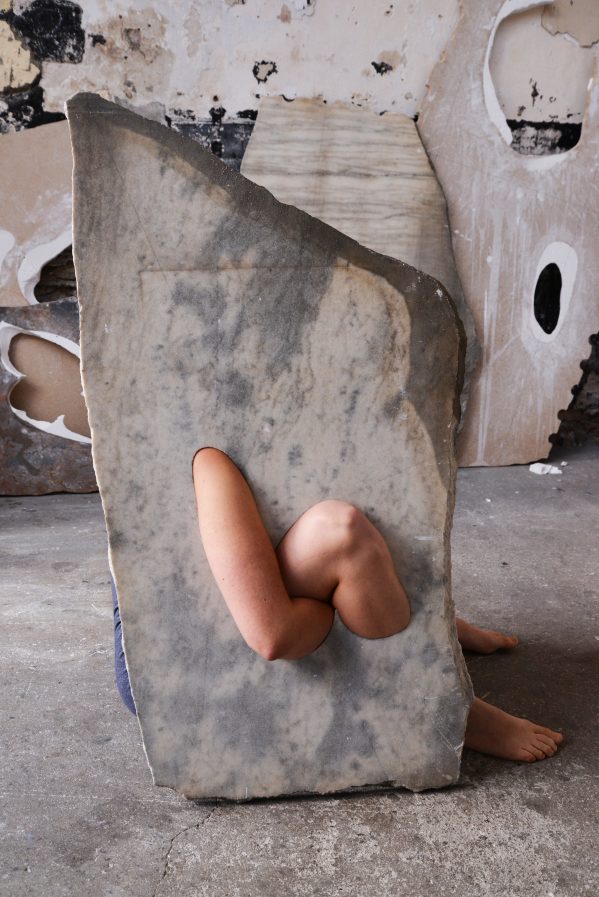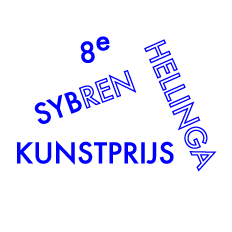17 October 2016
Interview with Milena Naef
Arianne Kamsteeg

AK: What is your biggest source of inspiration?
MN: I’m very interested in how we are guided – choreographed – by our environment. We feel free and in control of the choices we make, and yet what we do is, in the end, always controlled by the different structures in the space we find ourselves in. So, we are, in a sense, also simply materials, a small aspect of our environment.
AK: Which structures have shaped you? What is your background?
MN: I come from a long line of sculptors. I grew up in my father’s sculpture academy, and have always been surrounded by marble and its aesthetic. Yet, till four years ago, I never really dared to work with marble. Drawing, painting, working with clay: I did it all. But not marble, because it already had so much pressure and meaning attached to it. And when I did finally start working with it, I did so together with my father. I simply took slab of a rock, nothing conceptual or related to the academy about it. My father could not no anything with that, so that just increased the pressure.
For my graduation project at the Gerrit Rietveld Academie, I wanted to give this pressure and tradition a form. Something physical that I could react to and make my own on a physical level. I chose marble plates, made holes in them and shaped them to fit my body – and only my body. Even though the work was uniquely shaped to fit me, the viewer can still easily identify it as a burden, a ball and chain. This transforms my body and my specific context into a general, relatable idea. My body also becomes completely abstracted, as only a small part of the body is visible in between the marble: two very different materials.
And that’s exactly what I like: that you can try to give something a context, a physical form, that you can hold on to and really work with. I once made a glass backpack, for example. In itself a complete contradiction. The backpack required you to take care of it instead of it taking care of you.
AK: How do you pick your topics within these larger frames?
MN: It’s often very personal. Things I personally experienced, things I encountered that might be very small and yet I attach meaning to them. During my studies, I grappled with the idea that my work wasn’t allowed to or shouldn’t be personal. But it dawned on me that I cannot deny what I feel and think, and so instead I try to exploit that. By actively engaging with the personal you actually transcend it and turn it into something much more universal. What I make is essentially a material translation of a feeling.
AK:What types of material do you work with and how do you relate to them?
MN: Besides working with marble and glass, I draw a lot with anything I can get my hands on. My drawings are not autonomous final products, but they are essential in my creative process because they form the starting point of new work. I’m also keen to start working with paper. Stacks and stacks of paper to build with. I find paper an extremely sensual material. It’s very delicate, but together so strong. Even if you have a huge amount of paper, you can observe each sheet individually, and so you can easily adjust and disrupt the shape of the whole on an individual level.
I’m also very interested in movement. I started dancing three years ago to get my body and mind more in tune. Dancing quickly became an important routine in my life and, by extension, in my work. Using movements to create a choreography that people have to adapt to, and which creates grounding – a connection between body and soul. Using a body like this can be empowering, both for me and the visitor.
AK: How do you incorporate these different sensibilities and materials into your work?
MN: My work is multi-layered. My graduation project, for example, was about so much more than the performative act. The interplay between presence and absence, the triggering of the work or lack thereof, and the resulting frustration and inequality experienced by both me and the visitor fascinates me. But, in the end, I wanted to give each work its own identity and space, so that they can become independent pieces. After all, they will most certainly outlast me. I therefore see the marble plates as an archive. Although carved from marble, the form is so specific to what my body was capable of at the moment of making it. It is an archive of material snapshots, of possibilities, using my body as measurements. The question arises how you measure time and space solely with your own body. What was a real eye opener for me, was the idea that your body is a volume that takes up space everywhere and always.
AK: How do your personal experiences relate to the experiences of your public?
MN: I mostly work from my own experiences, but I do try to persuade the visitor to actively use their own experiences and frameworks. I give the visitor a lot of control in my performances, for example, without them necessarily being aware of it. In future, I would like to expand on this notion of the visitor as material, as part of my work.
In Fleeting Parts, I first try to make the visitor relate to my work in a physical sense, which produces a personal recognition. For me, this only works if there is a clear, direct connection. As soon as I need to explain something to create this connection, I no longer consider the work successful. I like simple things that work well. Things that don’t require too much effort, that are small but the right choices. Choices that are clearly made for the obvious reasons. I’m not great at building huge stories. To me, the smallest realisations can achieve the biggest impact.
AK: How do you and your work relate to the location?
MN: I like to work site specific. It’s fine if the context changes at a later stage, but I do really like to start from a specific context. I don’t know the space at Kunsthuis SYB very well yet and I would really like to work with the space, but time-wise I won’t make it this time. I’d rather like to create a beautiful exhibition with work that I trust and see how the space presents itself to me, what it asks of me and how I can respond to it and handle it.
AK: What is your next step?
MN: I’d like to wait a bit before starting a Masters. I expect to learn lots of new things now that I have stepped out of the safe embrace of the Rietveld Academie. And sure, there will be some falls and failures, but that’s all part of the learning process. As long as working and learning remain playful. It’s time to build my own structure, my own ‘body’ to work in, and I’m really looking forward to that!
